Oil Lamps in the Geek House
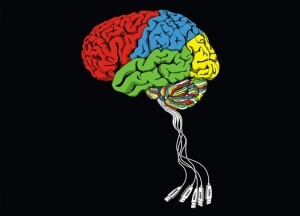
Of the five senses, the two I get most signal through are sight and hearing. Over the past few weeks I’ve been experimenting with the former and have made some interesting discoveries (or perhaps more correctly, rediscoveries). I have no qualifications in lighting or biological science but think it’s worth sharing my experiences and a summary of what I’ve learned. I’d love to hear from you (in the comments) if you find any of it interesting.
People’s sensitivity to their environment varies greatly. I think I’m on the more sensitive end of the spectrum and are more affected by:
-
glare - halogen down-lights, car headlights in the rear view mirror
-
color temperature - evening computer use, walking into convenience stores lit by fluorescent lights
-
golden hour - first/last hour of sunlight loved by photographers and film makers
-
firelight - candle, oil lamp, campfire
The Lamp Shop
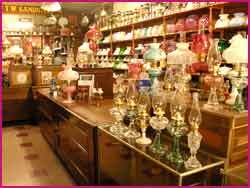
As a teen I went through a phase of lighting candles in my bedroom. The light they produced created a different mood or atmosphere that I think most readers will relate to. A few weeks ago when walking home from the Melbourne CBD I came across a curious little lamp shop that would not have looked out of place a century ago.
Established in 1918 and in Elizabeth Street from 1951 to 2004, T.W. Sands & Co is one of the few original lamp houses left in the world.
T.W. Sands & Co has been selling oil and kerosene lamps for almost 100 years. They never switched to electricity! Inside they sell new and old lamps, as well as wicks, chimneys, oil and replacement parts. My curious mind lit up with questions - fortunately the staff have a detailed knowledge of the workings of the lamps along with the history of advancements in burner technology. In short, the Americans won the arms race with the 40 candle power Aladdin which is still in production today. This uses a thermoluminescent mantle that throws off a bright white light when heated by the burner. They’re so bright they require a shade to reduce glare and while great for a dinner table I prefer my flames naked.
Oil Powered Time Machine
I returned the next day to buy three different types of lamp for my 1880’s home in Carlton North. The house sports three rather impressive fireplaces that would have been the main source of heating when built. The mantle pieces seemed like an obvious place to put the lamps. They stand at shoulder height and are a foot deep which means the lamps:
- are in an optimal position to light faces
- illuminate the other things on the mantlepiece, creating a feature
- probably most importantly, won’t get knocked over by an arm or bag hanging from someone’s shoulder
This last point is important. A number of people expressed alarm that I was using firelight in my house, fearing an accident. While I don’t think lamp oil will burn on floorboards, a rug, curtains or other wick-like furnishing would be happy to assist and I could imagine many a housefire was started by a lamp. The clumsy and dim witted are probably better off in a fire free household. I’m confident I can manage it though. Already I felt like I was defending something that few would have worried about in the 1880s.
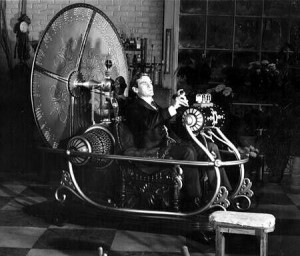
I decided to do a sort of Earth Hour on steroids, abstaining from electric lighting for a week. The experience transported me back to a time where the human experience of night time was very different to what we know today. For someone with little practical experience using firelight in a domestic environment I had to work things out for myself. This was interesting from a historical perspective but also led to me learning more about how our eyes work and the magic of night vision.
In some ways it felt like camping, perhaps because that’s the only time I experience the night without electric lights. For this experiment I had a control - the house as I used it before - so I could identify what elements of the experience were due to the lighting. This removed confounding variables like country air, a long drive and kangaroos.
Firelight Changes the User Interface of a Room
Back in the late 90’s Google replaced Alta Vista as the search engine of choice.
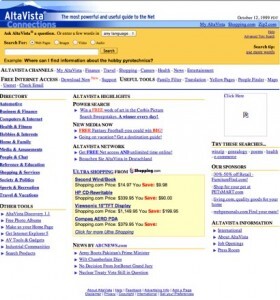
One refreshing change was the lack of distractions on the Google’s search page.

Modern home lighting is akin to flood lighting. The majority of homes have overhead lighting without dimmers which results in reflected (and lots of it) light being pretty evenly dispersed. Firelight is of lower intensity and so highlights things in close proximity. You wouldn’t clean the floors to firelight - that’s a job better left for the cold light of day. Similarly, it’s not as easy to check for mud on your boots in firelight. I wouldn’t be surprised if people we more inclined to leave them at the front door if they came home after dark.
Low output lights seems to create less extraneous stimulus by creating more focus on areas nearer the light source.
Ow! My Eyes!
In addition to the lower intensity of firelight, it also gives has a much warmer colour temperature. At the opposite end of the spectrum is the light you’re confronted with when visiting a convenience store lit by fluorescent tubes.
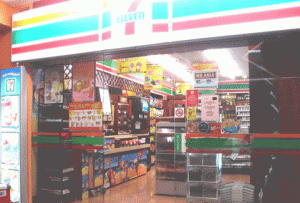
Color Temperature is measured in Kelvin and strangely enough a lower value refers to a warmer light. It refers to the temperature of a black body radiator that emits a light of comparable hue. The ‘cold light of day’ is up there with fluorescent tubes which might explain why walking into one at night can be feel so unpleasant. Suddenly adjusting to a different color temperature seems to be a bit jarring for some people.
| Temperature (K) | Source |
|---|---|
| 1,700 | Match flame |
| 1,850 | Candle flame, sunset/sunrise |
| 2,700–3,300 | Incandescent lamps |
| 3,000 | Soft White compact fluorescent lamps |
| 3,200 | Studio lamps, photofloods, etc. |
| 3,350 | Studio “CP” light |
| 4,100–4,150 | Moonlight,[2] xenon arc lamp |
| 5,000 | Horizon daylight |
| 5,000 | tubular fluorescent lamps or Cool White/Daylight compact fluorescent lamps (CFL) |
| 5,500–6,000 | Vertical daylight, electronic flash |
| 6,500 | Daylight, overcast |
| 6,500–9,300 | LCD or CRT screen |
| 15,000–27,000 | Clear blue northern sky |
Golden Hour (sunset/sunrise) is well known to photographers and film makers for whom light quality is critical. While factors such as smog can have an impact, generally the light at this time has a color temperature closer to firelight. I took to walking my dogs at this time and in addition to watching the sun light up the clouds noticed the changes in the way it lights everything during that time. It’s also referred to as Magic Hour and I highly recommend it as a great time to take a walk outside.
Something you can do right now to make your computing life nicer is to install f.lux.
“Ever notice how people texting at night have that eerie blue glow? Or wake up ready to write down the Next Great Idea, and get blinded by your computer screen? During the day, computer screens look good—they’re designed to look like the sun. But, at 9PM, 10PM, or 3AM, you probably shouldn’t be looking at the sun.
F.lux fixes this: it makes the color of your computer’s display adapt to the time of day, warm at night and like sunlight during the day.It’s even possible that you’re staying up too late because of your computer. You could use f.lux because it makes you sleep better, or you could just use it just because it makes your computer look better.” - f.lux website
Night Vision
Walking the dogs at sunset led to a surprising discovery. On returning home I needed to enter the house in the dark to light my lamps. (I’m pretty sure people used to keep a hand lamp on the hall stand to make this task easier/safer!). On returning home one evening I discovered I could navigate reasonably well using just the light entering my windows from the night sky and street lighting.
“Rhodopsin is the chemical that allows night-vision, and is extremely sensitive to light. Exposed to a spectrum of light, the pigment immediately bleaches, and it takes about 30 minutes to regenerate fully, but most of the adaptation) occurs within the first five or ten minutes in the dark.” Wikipedia
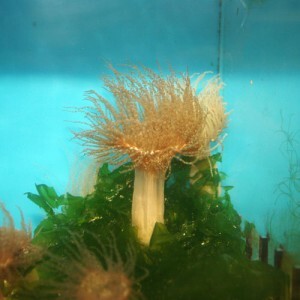
Like an anemone, night vision is super sensitive to disturbances, quick to retreat and slow to return.
“The human eye can function from very dark to very bright levels of light; its sensing capabilities reach across nine orders of magnitude. This means that the brightest and the darkest light signal that the eye can sense are a factor of roughly 1,000,000,000 apart. However, in any given moment of time, the eye can only sense a contrast) ratio of one thousand. What enables the wider reach is that the eye adapts its definition of what is black. The light level that is interpreted as “black” can be shifted across six orders of magnitude—a factor of one million.”
- Wikipedia entry to Adaptation (eye)) - Note that it does not contain a citation!
Firelight doesn’t seem to blow away my night vision. When I walk out into the backyard I can see pretty well.
How Low (Light) Can You Go
The idea that my eyes had a contrast ratio of 1000 but that I could potentially sense across nine orders of magnitude led me to try to create a darkroom in my house. In short I failed to stop all light from entering my living room. At first it appears that the bin liners taped to the windows had worked but as my adaptation progressed I could see lighter patches on the windows where the bin liners were not doubled over. Reflected light from the ski was seeping through!
That said, the light getting in was not enough to allow me to see my hand in front of my face - the quintessential measure of darkness. My hand was visible if a held a lit cigarette close to it but not when I moved it a foot away. I was amazed at how sensitive my eyes were to light in such a low light environment. How much light does a lit cigarette emit? I would love to know if that’s been measured!
Looking around the room I could see what looked like light seeping under the door. This light originated from the street, passed through the window in my front door and then down a long hallway. It occurred to me that in this modern era it’s almost impossible to keep light out.
To Be Continued?